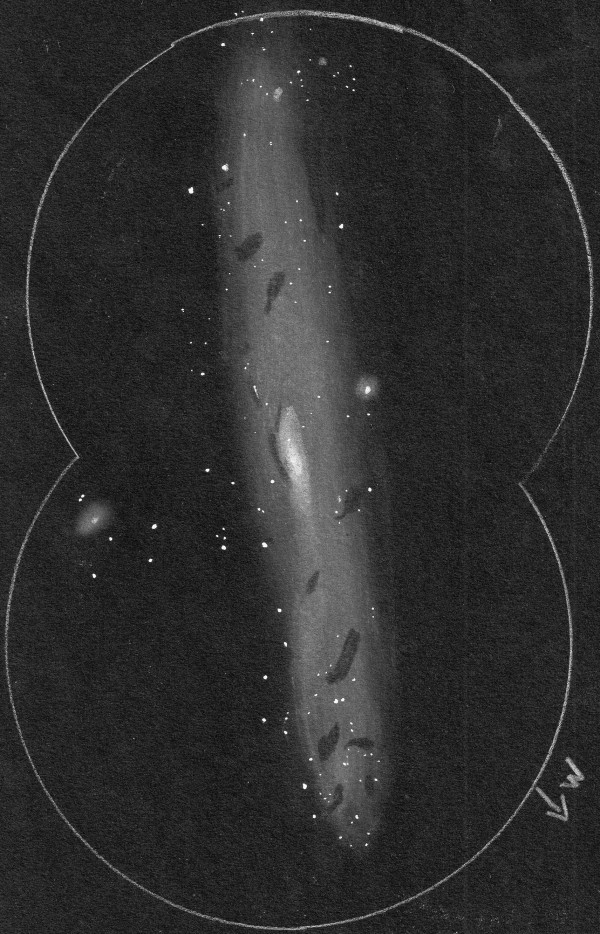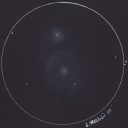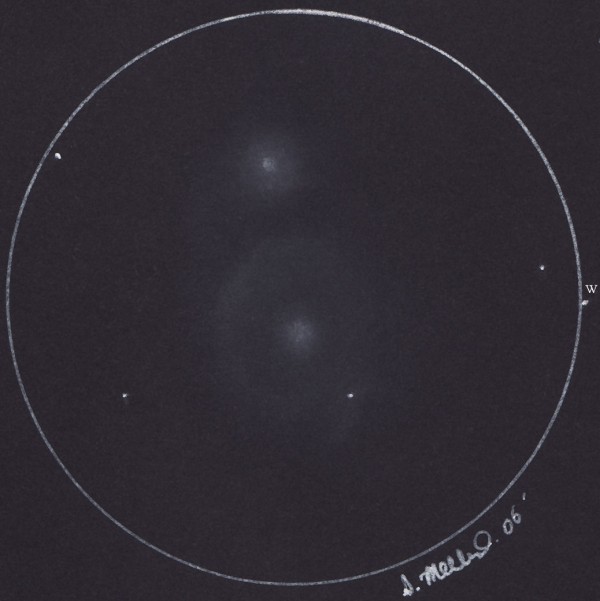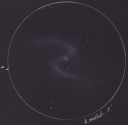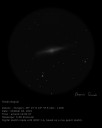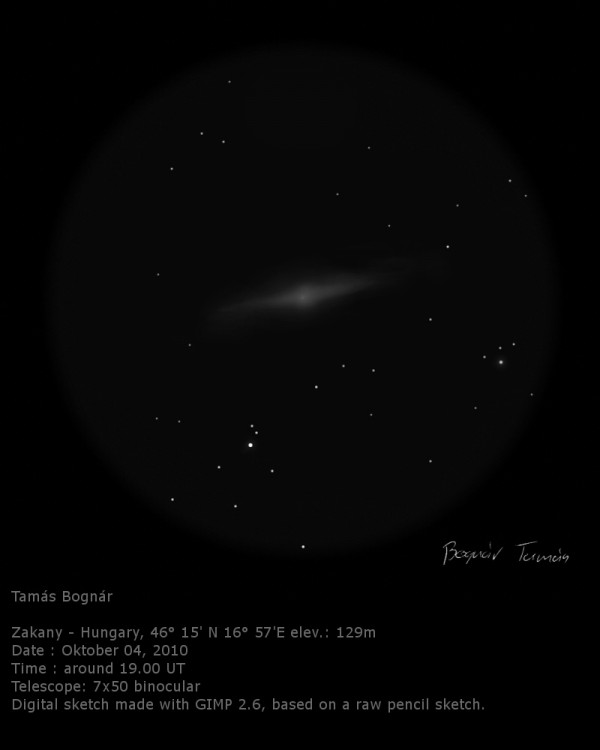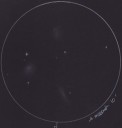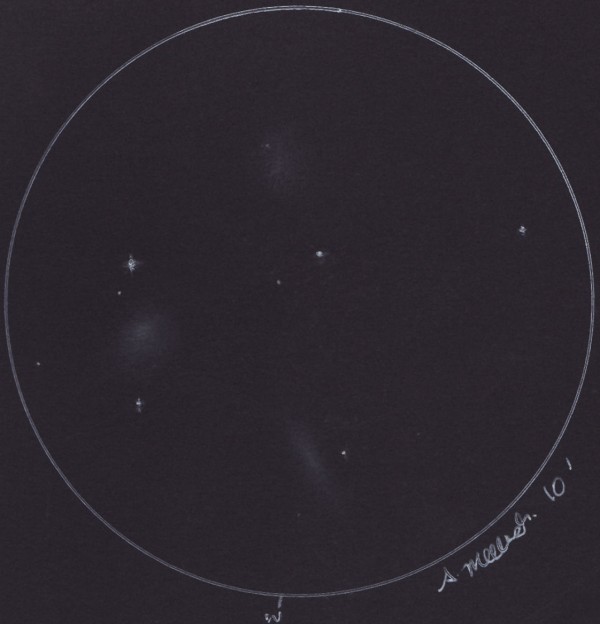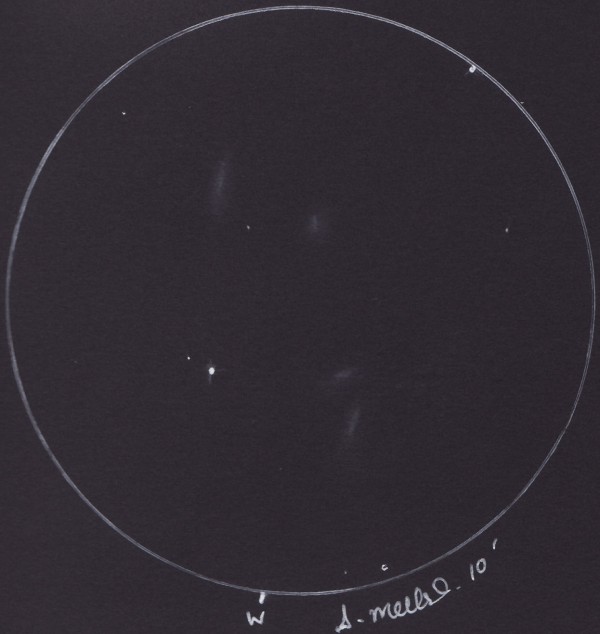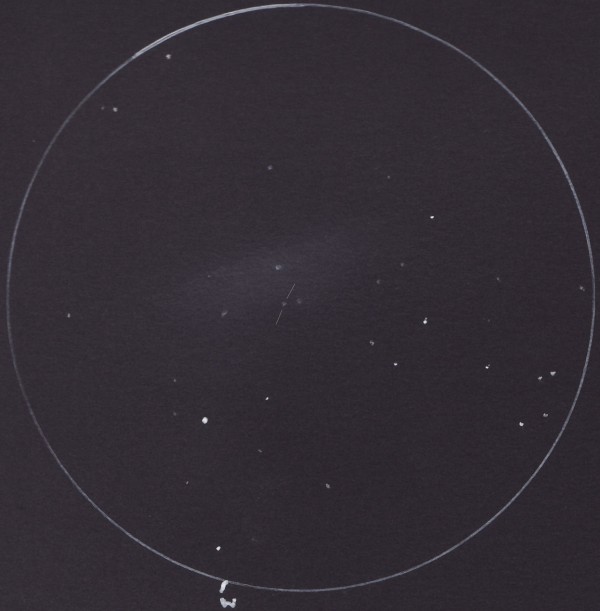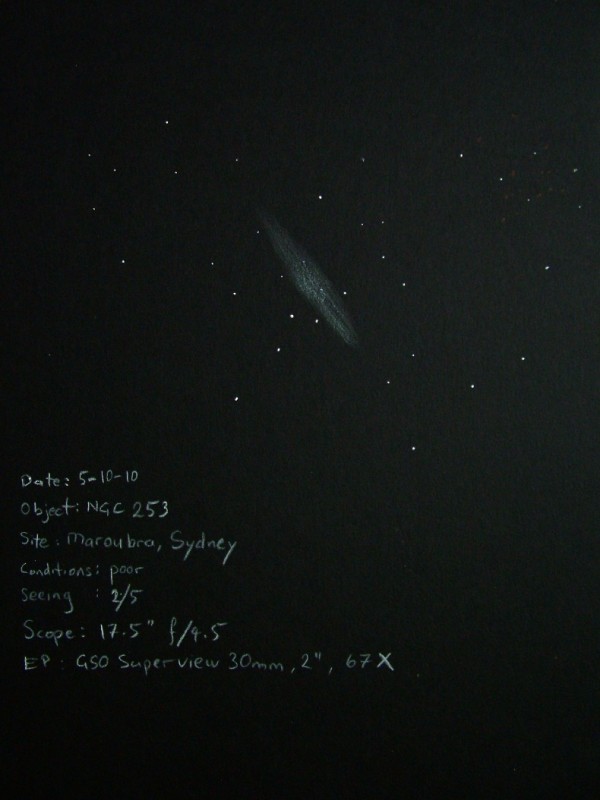
Object : NGC 253, Sculptor Galaxy
Type : near edge-on spiral galaxy
Location : Inner Sydney, Australia
Date : Aug. 10, 2010
Media : White paint, grey and white pencil on black paper
Gear: 17.5” truss dob, GSO Superview 30mm eyepiece, 67X
Conditions: Heavily light polluted
Hi all,
I’ve just found this brilliant site and I’d like to make a submission.
While we would all like to get to a dark site, it isn’t always possible. So last August the best I could manage was a session from my backyard in Sydney’s Eastern Suburbs.
NGC has a lovely lenticular shape, with its extensions very slowly fading out, and a with a brighter Core . I noticed a darker “lane” running down from just below the Core down through the left lobe.
Conditions of Sydney’s sky have deteriorated significantly in the last year, sadly. I remember much more detail was observable last year in 253, and other objects easily visible last year today exceptionally faint, or now invisible in my 17.5” reflector, L .
Kind Regards,
Alex Massey

